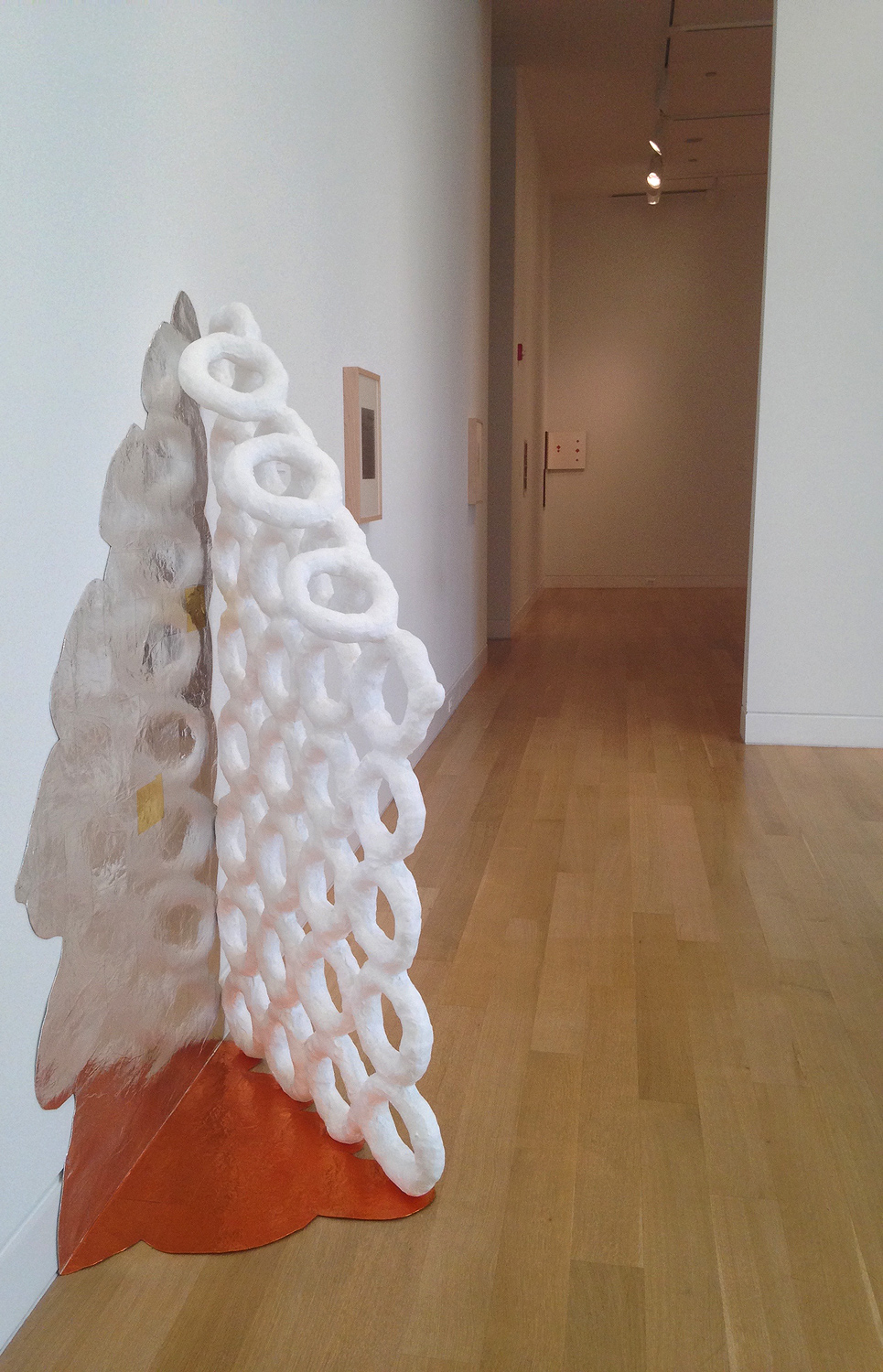
As we work towards our degrees at the School of the Art Institute of Chicago (SAIC), we hope to find professors that we can connect with. We wish even more for those relationships to last beyond our time here, when professors can become colleagues, peers, and friends.
“Split Complementary” is an exhibit that features Richard Rezac, a faculty member in Painting & Drawing and Sculpture, along with Dianna Frid, a former student of Rezac’s and a prominent local artist. In the exhibition catalogue, DePaul University painting professor and the curator of the exhibit, Matthew Girson, describes why he brought these two artists together.
Throughout the gallery space, both artists’ works are punctuated by a number of objects from DePaul Art Museum’s (DPAM’s) collection, and the John T. Richardson Library at DePaul University. The pieces selected respond texturally, formally, and culturally to the artists’ pieces in ways that provoke the viewer to investigate what we keep in our collective ideas of beauty, order, and disorder.
When I asked Frid if she and Rezac had a role in selecting pieces from the collection, she replied, “I suggested to Matthew that we look into the DePaul Museum’s and the Special Collections’ holdings because, through my research in Oaxaca, I noticed that potentially rich connections and dialogues emerge between objects close and far to us (close and far in both time and place.)”
In the exhibition, the placement of objects within the space excites without overwhelming the viewer. There is enough room for the sculptures to have an orbit to them which people can stand in and feel the object’s pull. I told Rezac that his pieces seem to oscillate between lightness (Untitled (99-07)) and tension (Web, 1996), and asked what he thinks those qualities give to the space as they rest with Frid’s work and the collection’s materials.
He said that “each work of art and displayed book in this exhibition – Dianna’s, mine, and those from the DPAM collection, of course have their own identity or gestalt. This is a unique character of the show, I think, and the effective arrangement is altogether the achievement of the curator, Matthew Girson. He chose the works well, and Matthew has stated that for him the architecture of the galleries: their volume, proportions, corners and details are an especially important feature in this show, allowing the space to underscore and differentiate the individual works.”
The conversations I had with both artists also brought up issues of materials and process. Rezac’s pieces retain an immaculate execution subtly alluding to recognizable forms but never fully reaching a level of representation. He shared with me that “since graduating from art school, my work – and the visual language that I use, has been abstract.”
Frid’s aesthetic is less geometric and also deals with language. She examines the idea that “text and textile come from the Latin root “texere” which means to weave. Because of her use of language as a material in art making, I am curious to ask what kind of sources she draws from. The pieces that do include language allow for invocations of the celestial, environmental, and personal. Frid stated, “the language that makes it into my work comes from many sources, from the literary-hefty to the everyday. For example, I have been working on a long-term project “Words from Obituaries” where I comb through obituaries published in the New York Times to find moments, excerpts, that I extracted and then embroidered on graphite. None of these works are in the DePaul show but I mention them in contrast and in relation to Lucretius’ De Rerum Natura—another constant source, but one that comes to us from Classical literature (I use Humphries vernacular, unrhymed translation).”
The exhibition allows for Frid’s embroidered texts and Rezac’s curious surfaces to call and respond to each other in a way that brings a new entry point to the historical items, creating a triad harmony. I found that the exhibition functions like a book itself. Even when you stop to “read” a piece, you still hold the materials of the surrounding pieces in your mind, and are able to experience an environment that could inform not only any art practice, but any life practice.
“Dianna Frid & Richard Rezac: Split Complementary” is showing at the DePaul Art Museum from January 28 to April 24, 2016.







